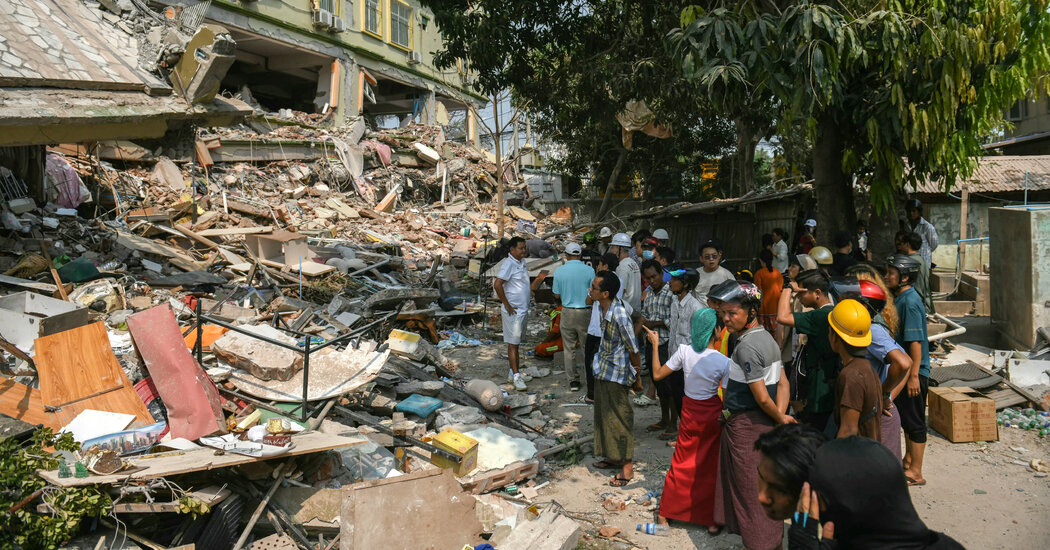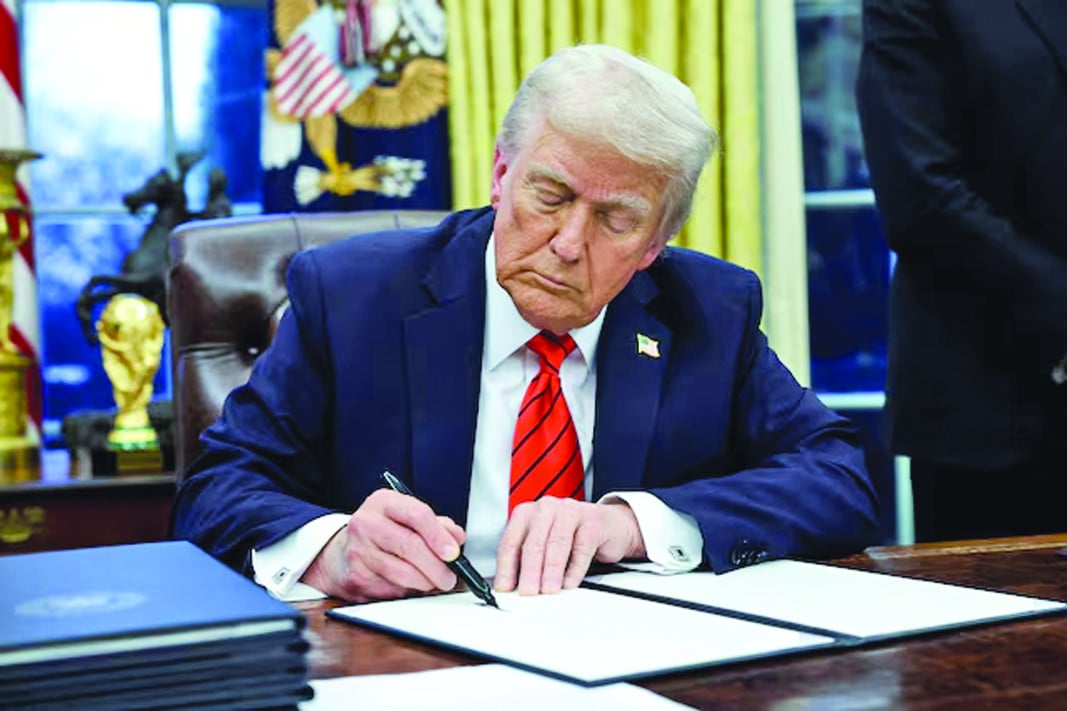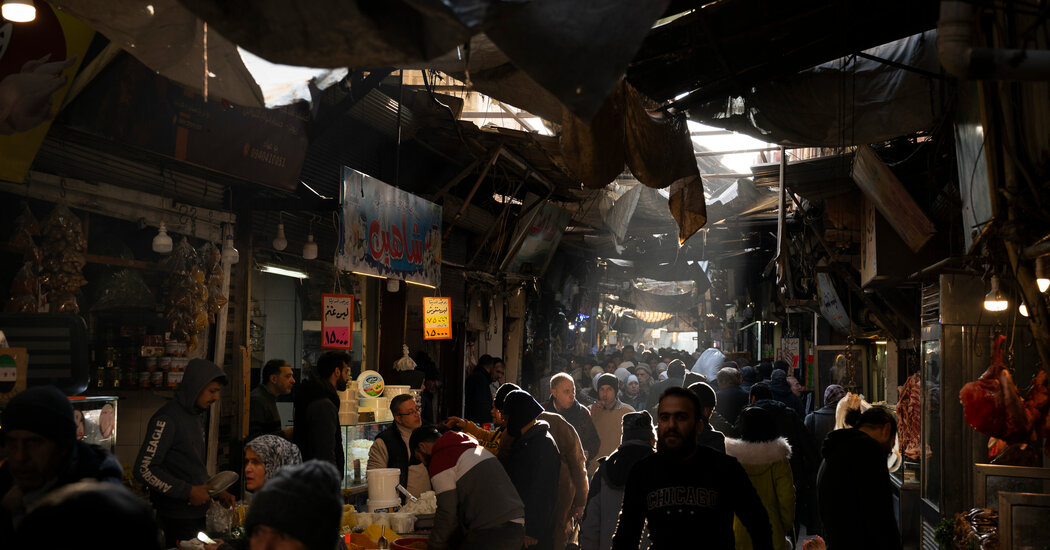A 7.7-magnitude earthquake struck central Myanmar on Friday, sending shock waves across other parts of Southeast Asia and China and leaving a trail of death and destruction.
The death toll exceeded 1,600 and more than 3,400 people were injured, the country’s military government said Saturday, and those numbers were expected to rise.
Hundreds of miles from the epicenter, the earthquake caused the collapse of a high-rise building under construction in Bangkok, killing at least nine people and leaving dozens others missing.
Myanmar is in the throes of a civil war that has left nearly 20 million people without proper food and shelter. Censorship imposed by its military government has limited the spread of information from the heart of the disaster, even as the scale of damage in Thailand and other countries has slowly become clearer.
Where was the epicenter?
The quake struck near Mandalay, Myanmar’s second-largest city, at roughly 12:50 p.m. local time, according to the U.S. Geological Survey. Approximately 11 minutes later, an aftershock hit the same area.
Central Myanmar, where large plates of the Earth’s crust are in motion, is prone to powerful earthquakes. The country lies on the eastern end of the Alpide Belt, one of the world’s most active seismic zones. Three quakes of magnitude 7.7 or greater have struck in or near Myanmar in the last century, according to a U.S.G.S. database, with the most recent in 1988.
The earthquake on Friday struck at a relatively shallow depth of six miles, meaning it was likely to cause more violent shaking. It devastated areas near the Sagaing Fault, which runs north-south through the center of Myanmar.
Which countries have been affected?
Despite the limited information from the authorities in Myanmar, the earthquake was almost certainly most destructive there. The city of Mandalay, the largest major city near the epicenter, has an estimated population of 1.5 million people.
Strong tremors were also felt in neighboring Thailand, particularly in Bangkok, where around 11 million people live in the metropolitan area. Prime Minister Paetongtarn Shinawatra declared the city an “area of emergency,” asking residents to evacuate from tall buildings to avoid aftershocks.
In China, news media outlets in Yunnan Province, which neighbors Myanmar, reported damage to buildings in the busy border city of Ruili. The shaking was also felt in Bangladesh, to Myanmar’s west, but there were no immediate reports of damage.
What is the death toll, and what damage has been caused?
Myanmar’s military government said on Saturday that 1,644 people had been killed by the quake, with another 3,408 people injured. The full extent of the toll was hard to assess in a country that faces heavy censorship enforced by Myanmar’s military government and has largely been isolated from the rest of the world.
The number of deaths was expected to rise as rescue workers dug through the rubble and injured people made their way to hospitals. Modeling by the U.S.G.S. estimated that the number of deaths was likely to surpass 10,000.
In Mandalay, video showed that the Ava Bridge, originally built by the British in the 1930s, had partly collapsed, according to footage verified by The New York Times. The quake was especially damaging to Myanmar’s historic and religious sites, reducing centuries-old monuments to rubble.
In Thailand, at least nine people died and scores more were feared buried under the rubble after a high-rise building that had been under construction collapsed in Bangkok. The city’s elevated train service was shut down in the wake of the tremor and people fled from tall buildings after the city was placed in a state of emergency.
What aid is Myanmar receiving?
The areas worst hit are in the center of Myanmar, which is controlled by the military junta. When disasters have struck in the past, like Cyclone Mocha in 2023 and Cyclone Nargis in 2008, the military government avoided asking for international assistance and throttled aid in areas not under its control.
After Friday’s earthquake, the junta made a rare appeal for help as it declared a state of emergency in six regions.
Areas of the country that are controlled by rebel forces are farther from the epicenter of the quake. These areas appear to be relatively unscathed, but information in these often isolated areas may be slow to emerge.
International aid began arriving on Saturday. China and India sent food and blankets for survivors, as well as rescue teams equipped with drones and other tools to help with the search effort.
President Trump said the United States would help, despite having slashed foreign aid and staff. Malaysia, Singapore, South Korea and other countries offered or sent aid in the form of teams of people, equipment and funds.
Reporting was contributed by Sui-Lee Wee, Keith Bradsher, John Keefe, Richard C. Paddock, Muktita Suhartono, Adam Satariano and Paul Mozur.



